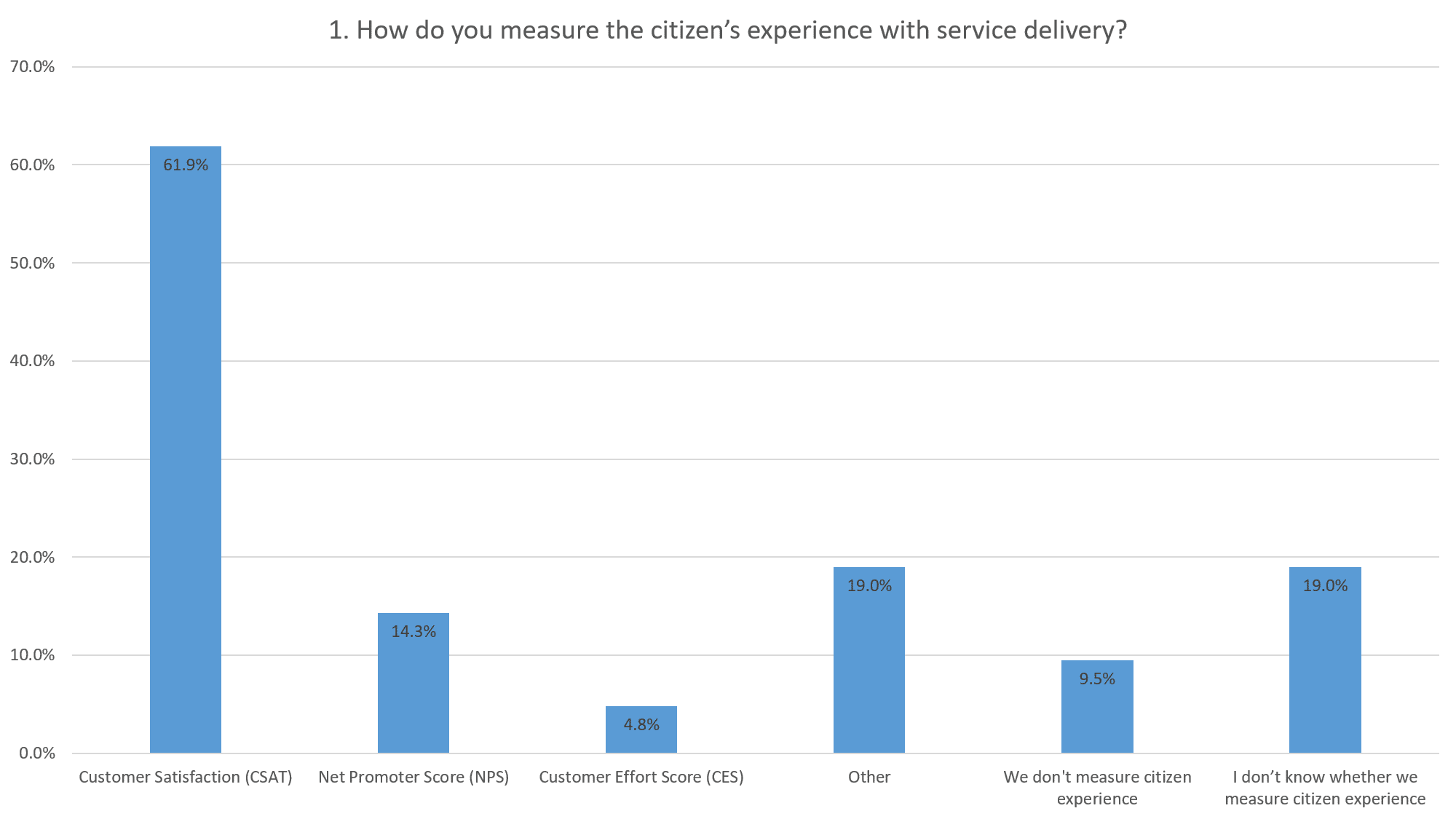On 23 June, the Public Sector Network (PSN), hosted a Responsive Government webcast, featuring presentations by the SAP Institute for Digital Government (SIDG) and the Queensland University of Technology (QUT).
The online event attracted over 60 delegates from the Australian and New Zealand public services, representing all levels of government.
Measuring citizen engagement
Included in the agenda was an online poll, focussing on how agencies measure the citizen experience and how they respond to citizen feedback. While the sample size is small and not necessarily representative of citizen engagement across the public sector, the responses were intriguing and prompted valuable discussion.

As shown, Customer Satisfaction (CSAT) is the most popular approach for measuring the citizen experience among our respondents.
A characteristic of this approach is that it’s a transactional measurement – CSAT reflects satisfaction with a specific interaction or service.
By comparison, relational measurements like Net Promoter Score (NPS) are better approaches for longitudinal analysis. Admittedly, it can be difficult to apply standard NPS questions about customer loyalty within a public sector context, but it’s possible to adapt the questions to focus rather on citizen trust in government.
Another measurement worth considering is Customer Effort Score (CES), which reflects the ease (or difficulty) of doing business with the organisation. In the commercial world, CES is an excellent predictor of customer churn, and while this typically isn’t an issue for government, agencies are motivated to make their online services accessible and easy to use.
Since this was a multiple-choice question, it was possible for the survey participants to select more than one response, and possibly that’s the optimal approach… A sensible combination of these measurement tools can provide excellent insight into citizen satisfaction with service delivery, and the impact that experience has on citizen trust in government.
Using feedback
Encouragingly, all our respondents ask the citizen about their service delivery experiences.
Yet the responses to this question seem to align with the transactional measurement approach of CSAT.
Adopting a more relational approach, by embedding feedback throughout the process, can enable agencies to take proactive action and mitigate risks before they turn into problems.
We could argue the merits of all these responses – it’s important that agencies respond in a variety of ways to close-the-loop with citizens.
We’ve observed that citizen satisfaction is increasingly being included in agency service commitments, and it’s encouraging to see that this feedback is also being actively used to inform service design.
Untapped opportunity
There appears to be an untapped opportunity for data-driven policy development among our respondents, to truly close-the-loop on citizen feedback.
It’s interesting that more than half of respondents cited issues with motivating and engaging a representative sample of citizens as their biggest challenge in measuring citizen experience.
SIDG research into Instilling Trust Through Transparency in Public Services, suggests that a bi-directional view could help to increase participation in government surveys.
Two-way conversation
The rationale being that, if the citizen can see how the data the government is collecting will be used to serve them better, they will be more willing to engage and contribute.
Improving the efficiency and effectiveness of service delivery has always been a motivating factor for collecting citizen feedback, so the leading response here is not all that surprising.
It’s encouraging to see a relatively high percentage of our respondents wanting to focus on keeping citizens informed throughout the service delivery process.
Public sector best practice
Experience from leading government agencies suggests that providing transparency and traceability into government processes can improve the citizen’s perception of the timeliness of service delivery.
This might be because the citizen can see their case progressing through the system in real-time, giving them confidence that their feedback has been heard and is being actioned.
The SIDG would like to thank all respondents to our online poll, as well as our partners from the PSN and QUT. We found the participants’ responses to be very insightful and through-provoking, and we hope that sharing these reflections will further progress the conversation.
If you’d like to find out more about becoming a Responsive Government, our whitepaper is free to download from the SAP website.
